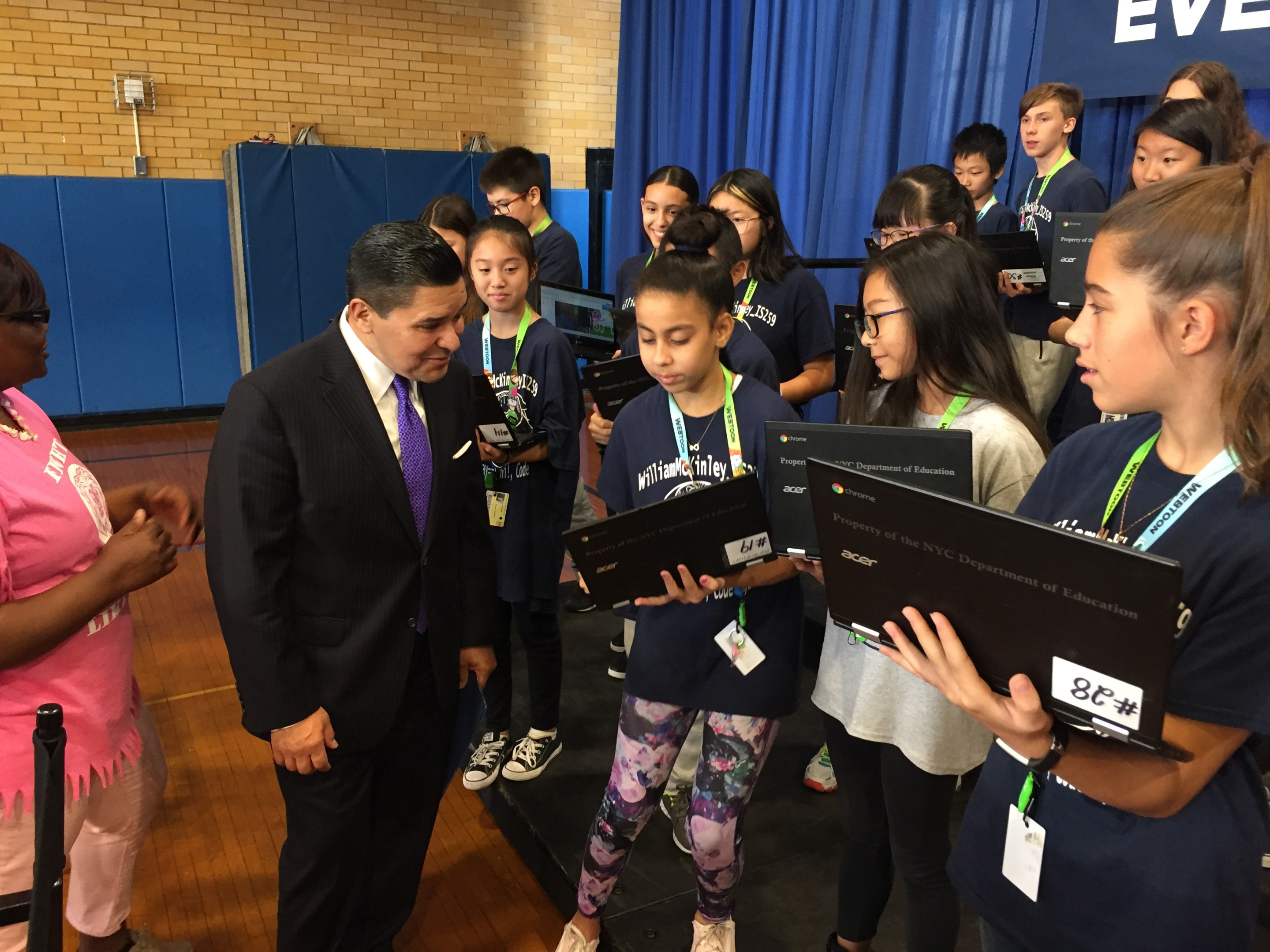Not my job!
New York City School Chancellor Richard Carranza said Wednesday that he has never talked to Mayor de Blasio about banning cars in front of elementary schools, a basic safety initiative that would save the lives of students and prevent scores of life-altering injuries.
The mayor's Vision Zero initiative is a multi-agency approach to saving lives through better road design and enforcement, but it seems that the public school system — with more than 500,000 elementary school students mostly walking to school every day — is a minor player in the program (if it is in the game at all).
At an unrelated press conference in Bay Ridge, Streetsblog confronted Carranza on his agency's paltry response to the road safety crisis that has already claimed the lives of 88 pedestrians — up eight percent from last year. So far this year, nine school-aged children have been killed on New York City streets. The death toll includes a boy who was killed by a van after stepping off a school bus. And the death count doesn't include hundreds of injuries caused by drivers whose cars dominate the city's public space.
Streetsblog's exchange with Carranza was telling:
Question: You have hundreds of school buildings with hundreds of thousands of elementary school kids going to school every day. As you know, the mayor has a Vision Zero initiative designed to get those kids to school safely. Have you ever pulled the mayor aside and said, "Hey, Mr. Mayor, wouldn't it be great if we could actually close streets to cars in front of all these school buildings, at least during school hours, so that car drivers would no longer be rushing past all of these students as they go to school?" Ever done that?
Richard Carranza: We work very closely with NYPD on a consistent basis. We're always looking at upgrading and being very cognizant of safety concerns in the community. And the NYPD has been very responsive to us. To the broader question, we have 1,300 school buildings, 1,800 schools, so it's more of a logistical concern that is outside my purview. But we work closely with NYPD to identify where there are spots. NYPD is really good about having school crossing guards. Our administrators and faculty at our schools, I'm consistently amazed at how proactive they are about supervision of morning activities and dismissal activities. So this is a constant topic that we concentrate on. And we will keep working closely with the NYPD.
Question: But, specifically, you have never pulled the mayor aside and said, "Let's close some streets in front of my schools."
Richard Carranza: Again, we talk curriculum and instruction. Never schools and streets.
Footnote: The Chancellor did support the mayor's expansion of the city's school zone speed camera system, which has already led to fewer crashes since more cameras were installed in July, and their hours of operation have been broadened.
But that's not enough, said Transportation Alternatives, which reminded that private schools sometimes get street closures.
"The city is able to close East 84th Street outside the St. Ignatius Loyola School every day. Don't the rest of our 1.1 million schoolchildren deserve the same safety benefits?" said the group's spokesman Joe Cutrufo, who walks his 5-year-old son to and from school every day on a street which he says could easily be off-limits to cars during school hours. "If New York is going to continue to set the tone nationally on Vision Zero, then we need to see a stronger commitment than 'being very cognizant of safety concerns.'"
A co-founder of Families for Safe Streets took it even more personally.
"A chancellor’s primary job is to protect New York City students," said Amy Cohen, whose son Sammy was killed by a driver near Prospect Park in 2013. "Vision Zero requires that every agency leader be involved in the solutions. Traffic near schools creates a needlessly dangerous environment for the smallest and most vulnerable New Yorkers. Closing dangerous streets near schools to traffic will create a safe passage for students and their families. This low-cost solution will have huge safety benefits and create a more livable environment for New York families."






